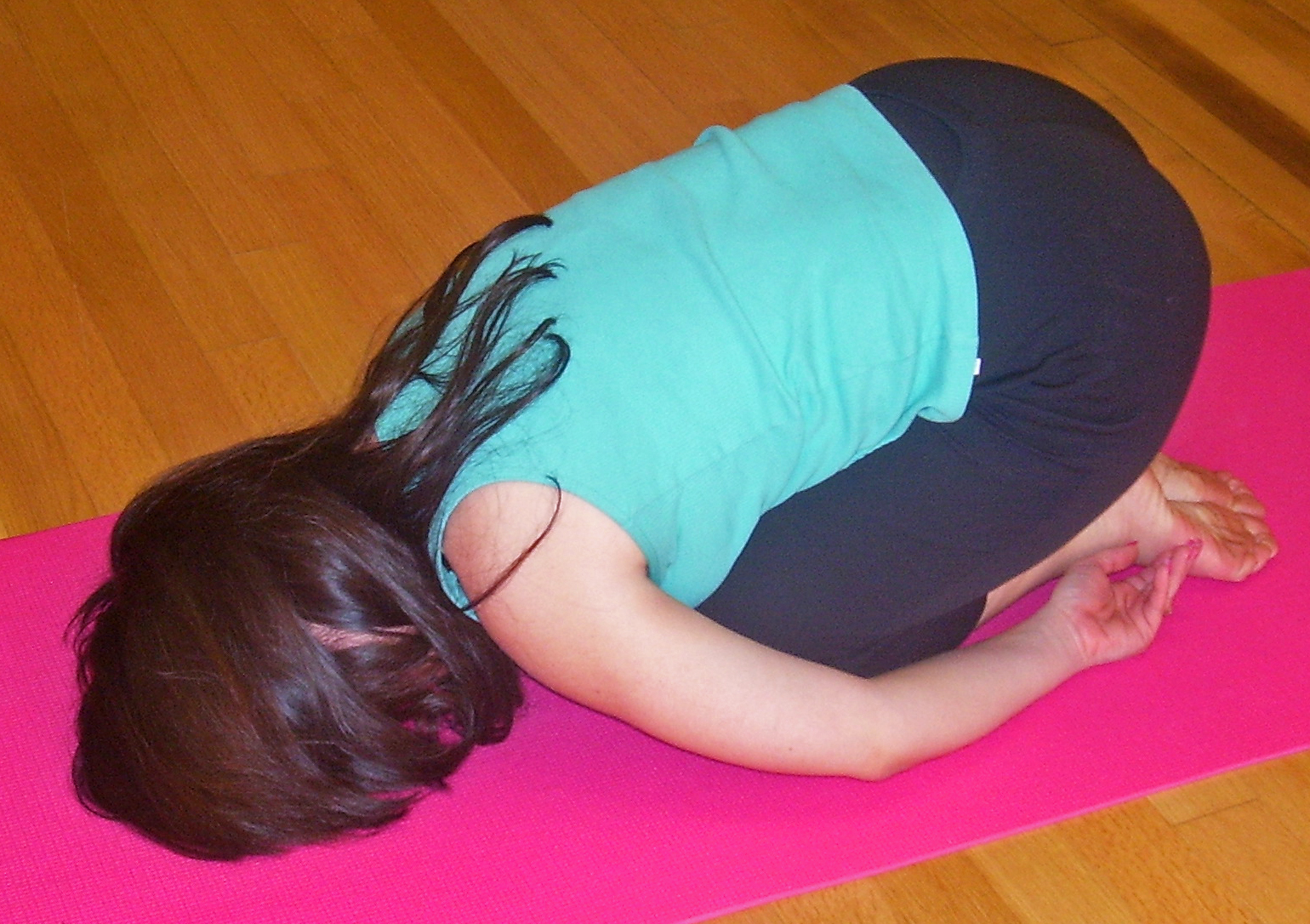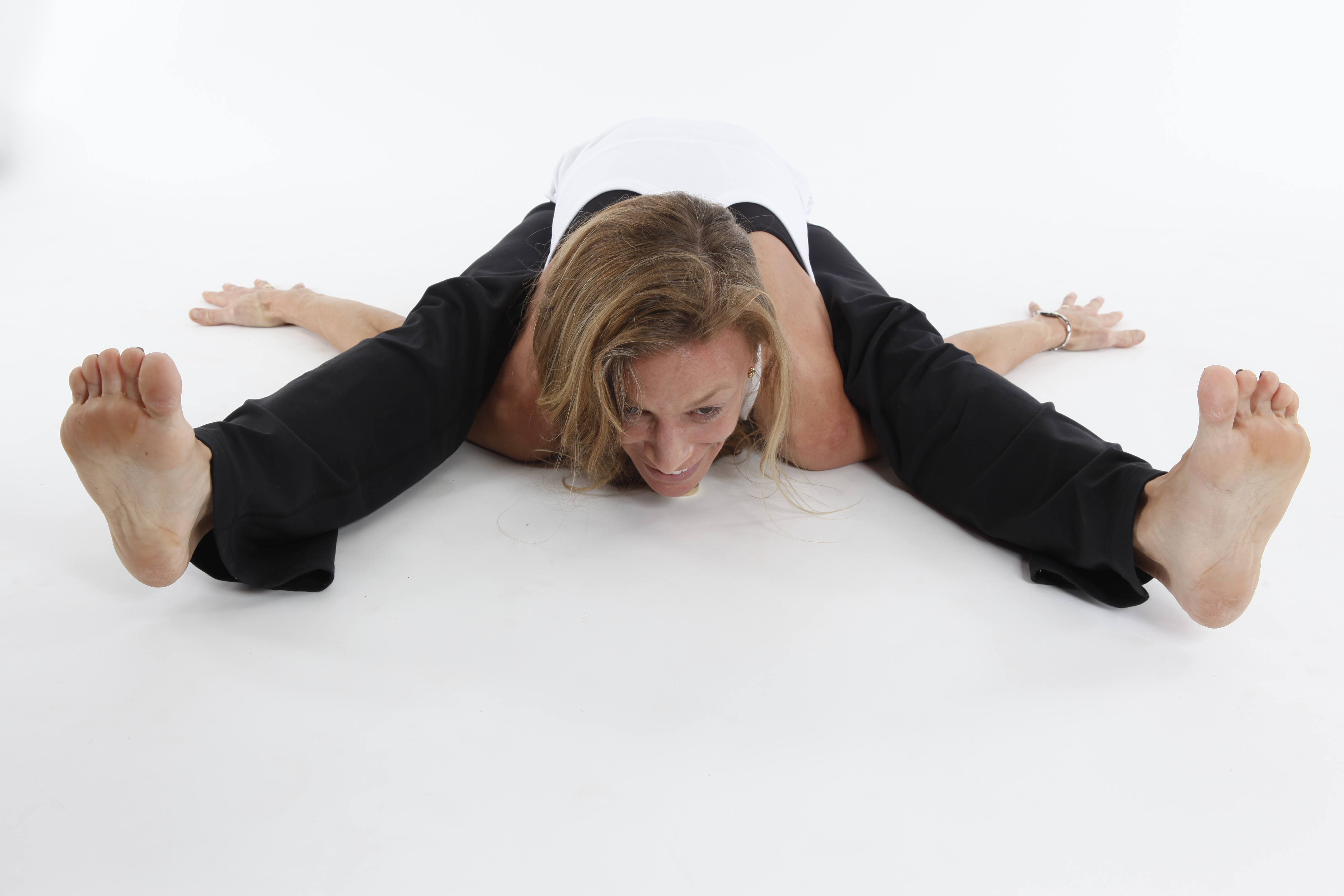Introduction
 |
| Satheesan.vn, CC BY-SA 3.0, via Wikimedia Commons |
Because they are practiced with the back supported by the floor, supine postures often feel safe and accessible for beginners while still offering challenge and depth for advanced practitioners.
These poses are especially helpful for releasing tension, calming the nervous system, and providing gentle yet effective stretches. They also encourage mindful breathing, as the open chest position in many supine postures makes deep diaphragmatic breathing more natural.
In this guide, we’ll explore the benefits, safety precautions, and step-by-step instructions for 10 essential supine yoga poses. Each pose will be described in detail with benefits and precautions so you can practice safely and confidently, whether you’re seeking relaxation, flexibility, or therapeutic relief.
 |
| Satheesan.vn, CC BY-SA 3.0, via Wikimedia Commons |
General Benefits of Supine Yoga Postures
-
Promotes Relaxation: Grounding the body on the mat encourages calm and stress relief.
-
Improves Flexibility: Stretches hamstrings, hips, shoulders, and spine.
-
Strengthens Core and Back Muscles: Many supine poses build abdominal strength.
-
Enhances Breathing: Open chest position supports deeper lung capacity.
-
Supports Circulation and Digestion: Gentle twists and stretches stimulate organs.
-
Accessible to Most Practitioners: Safe for beginners and useful for rehabilitation.
Precautions for Supine Yoga Postures
-
Avoid holding the breath—steady, relaxed breathing is key.
-
Use props (blankets, bolsters, blocks) for comfort and to reduce strain.
-
People with recent surgeries, spinal issues, pregnancy (for some poses), or uncontrolled high blood pressure should consult a professional.
-
Never force the body deeper into a stretch; supine postures are most beneficial when practiced with ease and awareness.
Supine Yoga Postures in Detail

Matsyendrasana
Joseph RENGER, CC BY-SA 3.0,
Wikimedia Commons
1. Supine Spinal Twist (Supta Matsyendrasana)

Joseph RENGER, CC BY-SA 3.0,
Wikimedia Commons
How to Do It:
-
Lie flat on your back with legs extended.
-
Draw the right knee toward the chest, then guide it across the body to the left.
-
Extend your right arm out to the side, palm up, and gaze toward it.
-
Keep both shoulders grounded as the spine twists.
-
Hold 30–60 seconds per side, breathing deeply.
Benefits:
-
Releases tension in the spine and lower back.
-
Massages abdominal organs, improving digestion.
-
Stretches shoulders, chest, and hips.
-
Calms the nervous system and reduces stress.
Precautions:
-
Avoid forcing the knee down if shoulders lift off the floor.
-
Support the bent knee with a block or cushion if hips are tight.
-
People with spinal injuries should practice under guidance.
Biswarup Ganguly, CC BY 3.0, via Wikimedia Commons Bridge pose, sometimes called Setubandhasana |
2. Bridge Pose (Setu Bandha Sarvangasana)
How to Do It:
-
Lie on your back, knees bent, feet hip-width apart.
-
Place arms alongside body, palms down.
-
Inhale, press into feet to lift hips upward.
-
Option: Interlace fingers beneath body and roll shoulders under.
-
Hold for 30–60 seconds, then lower down slowly.
Benefits:
-
Strengthens glutes, hamstrings, and back.
-
Opens chest and lungs, improving breathing.
-
Stimulates thyroid and abdominal organs.
-
Calms the brain and reduces anxiety.
Precautions:
-
Avoid if you have severe neck or spinal injuries.
-
Keep knees aligned with hips to protect joints.
-
Support the lower back with a block for a restorative variation.

Hath Yoga Child Pose
English Wikipedia user Daniel Case,
CC BY-SA 3.0, via Wikimedia Commons
3. Happy Baby Pose (Ananda Balasana)

English Wikipedia user Daniel Case,
CC BY-SA 3.0, via Wikimedia Commons
How to Do It:
-
Lie on your back and draw your knees toward your chest.
-
Hold the outsides of the feet (or shins if necessary).
-
Gently pull knees toward armpits, keeping ankles over knees.
-
Rock gently side to side if comfortable.
-
Hold for 30–60 seconds.
Benefits:
-
Opens hips and stretches inner thighs.
-
Relieves tension in the lower back.
-
Calms the mind and reduces fatigue.
-
Encourages playful, stress-free energy.
Precautions:
-
Avoid if you have knee injuries.
-
Use a strap around feet if reaching them is difficult.

Nicholas A. Tonelli from Northeast Pennsylvania, USA,
CC BY 2.0, via Wikimedia Commons
4. Reclining Bound Angle Pose (Supta Baddha Konasana)

Nicholas A. Tonelli from Northeast Pennsylvania, USA,
CC BY 2.0, via Wikimedia Commons
How to Do It:
-
Lie on your back with knees bent.
-
Bring soles of feet together, letting knees fall apart.
-
Place hands on belly or extend arms outward.
-
Stay 1–3 minutes, breathing deeply.
Benefits:
-
Opens hips and groin.
-
Relieves stress and anxiety.
-
Stimulates abdominal organs.
-
Supports relaxation and meditation.
Precautions:
-
Support knees with blocks or cushions if hips feel strained.
-
Avoid if you have hip or groin injuries.

Satheesan.vn, CC BY-SA 3.0, via Wikimedia Commons

Satheesan.vn, CC BY-SA 3.0, via Wikimedia Commons
5. Reclining Hand-to-Big-Toe Pose (Supta Padangusthasana)
How to Do It:
-
Lie on your back, legs extended.
-
Loop a strap around the right foot and extend leg upward.
-
Keep the left leg grounded.
-
Hold for 30–60 seconds, then switch sides.
Benefits:
-
Stretches hamstrings and calves.
-
Improves flexibility and circulation.
-
Relieves lower back stiffness.
-
Enhances focus and balance.
Precautions:
-
Keep shoulders and head relaxed on the floor.
-
Avoid straining to straighten the leg—bend the knee slightly if needed.

Pigeon Pose
Barry Silver, CC BY 2.0,
via Wikimedia Commons
6. Reclined Pigeon Pose (Supta Kapotasana / Figure Four Stretch)

Barry Silver, CC BY 2.0,
via Wikimedia Commons
How to Do It:
-
Lie on back, bend knees, feet on mat.
-
Cross right ankle over left thigh (figure four shape).
-
Draw the left knee toward the chest, interlacing hands behind the thigh.
-
Hold 30–60 seconds per side.
Benefits:
-
Opens hips and glutes.
-
Relieves sciatic nerve tension.
-
Stretches lower back.
-
Encourages relaxation.
Precautions:
-
Avoid if you have had recent hip or knee surgery.
-
Keep the ankle flexed to protect the knee joint.

Garudasana
Drchirag patel,
CC BY-SA 3.0, via
Wikimedia Commons
7. Reclined Twist with Eagle Legs (Supta Garudasana Twist)

Drchirag patel,
CC BY-SA 3.0, via
Wikimedia Commons
How to Do It:
-
Lie on your back, bend your knees.
-
Cross right thigh over left (eagle legs).
-
Drop legs to the left while keeping shoulders grounded.
-
Gaze to the right, breathing deeply.
-
Hold 30–60 seconds per side.
Benefits:
-
Deep spinal twist releasing back tension.
-
Stretches outer hips and shoulders.
-
Calms the mind and relieves fatigue.
Precautions:
-
Avoid if you have serious spinal injuries.
-
Place a blanket between knees if joints feel strained.
Flora-Victoria, CC0, via Wikimedia Commons Hatha Yoga, Pawanmuktasana |
8. Supine Wind-Relieving Pose (Pavanamuktasana)
How to Do It:
-
Lie on your back, and bend your knees toward your chest.
-
Hug both knees with arms.
-
Option: Hug one knee at a time for the half variation.
-
Hold for 30–60 seconds.
Benefits:
-
Relieves gas and improves digestion.
-
Stretches lower back and hips.
-
Calms the nervous system.
-
Gentle release before relaxation.
Precautions:
-
Avoid if you have had recent abdominal surgery.
-
Practice gently if you have knee issues.
Biswarup Ganguly, CC BY 3.0, via Wikimedia Commons Bridge pose, sometimes called Setubandhasana |
9. Supported Shoulder Bridge (Restorative Variation)
How to Do It:
-
Lie on your back, bend your knees, and keep your feet hip-width apart.
-
Lift hips slightly and place block under sacrum.
-
Rest pelvis on block, arms relaxed.
-
Stay 1–3 minutes.
Benefits:
-
Restorative version of Bridge Pose.
-
Relieves fatigue and stress.
-
Opens chest and hips gently.
-
Encourages circulation.
Precautions:
-
Ensure the block supports the sacrum, not the lower back.
-
Avoid if the block feels unstable.
 |
Joseph RENGER, CC BY-SA 3.0, via Wikimedia Commons Shavasana—Corpse Pose |
10. Corpse Pose (Savasana)
How to Do It:
-
Lie flat on your back, legs extended comfortably apart.
-
Arms at sides, palms facing up.
-
Close your eyes, breathe naturally, and release tension.
-
Stay 5–10 minutes or longer.
Benefits:
-
Ultimate relaxation and integration posture.
-
Calms the mind and reduces stress and anxiety.
-
Lowers blood pressure and heart rate.
-
Helps the body absorb the benefits of yoga practice.
Precautions:
-
Use a bolster under knees if lower back feels strained.
-
Place a blanket for warmth if needed.
Conclusion
Supine yoga postures offer a perfect balance of relaxation, flexibility, and therapeutic benefits. Because they are practiced lying on the back, they provide stability and comfort, making them accessible to practitioners of all levels. From energizing core work to deeply restorative stretches, supine poses strengthen the body, calm the mind, and support overall well-being.
The key to reaping the full benefits is mindful practice—listening to your body, using props when needed, and never pushing into discomfort. Whether you choose the grounding stillness of Savasana, the digestive support of Wind-Relieving Pose, or the hip-opening benefits of Reclined Pigeon, supine yoga postures can become a cornerstone of your practice.
By integrating them regularly into your routine, you’ll experience not only physical flexibility and strength but also greater inner peace and relaxation. Supine yoga reminds us that sometimes the most profound transformation comes from simply lying back, breathing deeply, and allowing the body and mind to restore balance.










